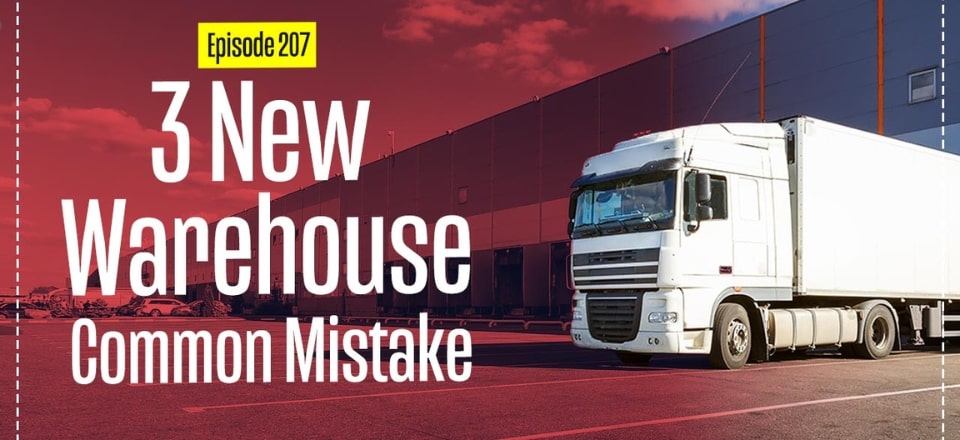When establishing requirements for distribution centers and warehouses, I often see three common errors, especially concerning design and location selection.
These pitfalls can be costly and time-consuming, but the good news is you don’t have to make them.
In this video, I’ll walk you through these issues and offer practical advice on how to avoid them, ensuring a smoother, more efficient process.
Stick around for valuable tips and resources.
Common Mistakes When Moving to a New Distribution Center
This week, we’re discussing warehousing and three common mistakes businesses make when relocating to a new distribution center. With 26 years of experience helping companies design and move warehouses, I’ve observed these frequent errors and want to share them to help you avoid them.
Incorrect Warehouse Design
One major mistake is designing the warehouse layout after acquiring land or leasing a new facility. Many businesses approach us with a predetermined space, expecting us to fit their needs into it. However, this often leads to overestimating or underestimating space requirements. For instance, I once encountered a company that designed a warehouse double the size needed because they hadn’t conducted a thorough analysis of their storage and handling needs. It’s crucial to first understand your requirements and future growth before committing to a new space.
Not Planning for Growth
Another common error is failing to account for future growth. Businesses often project a flat growth rate, such as 7% per year, without considering changes in inventory types, SKU ranges, or operational needs. Reflect on your historical data and trends to project future needs accurately. For example, if your product range or order profiles are expanding, you must plan for increased storage capacity and more complex picking processes.
Inadequate Future Profiling
The third mistake is not detailing the future profile of your warehouse. Simply adding more space without considering how it will be used is inadequate. You need to assess future SKU counts, storage locations, and picking processes. For example, if you’re transitioning from palletized to carton picking or expanding to include new product types, these changes will impact your warehouse design significantly. Address these factors early to avoid costly adjustments later.
These three mistakes can significantly impact your warehousing efficiency and costs.
Related articles on this topic have appeared throughout our website, check them out:
- Warehouse Product Slotting: The Ultimate Guide
- Warehouse Design – Rules of Thumb… And a Checklist
- Planning a Warehouse Network and Design: Key Factors to Consider
- 10 Proven Principles for Best Warehouse Design and Operation
- A Recommended Approach to Warehouse Layout and Operational Design
Editor’s Note: The content of this post was originally published on Logistics Bureau’s website dated August 02, 2023, under the title “Avoid These 3 Common Mistakes in Warehouse Design“.

